WINNING PHOTO. Dale Poulnot of Charleston wanted to know what Charleston harbor looked like around high tide during Saturday’s deluge of rain. So she stepped outside, walked to the Battery and snapped this photo. “I thought it was scary spectacular!” she told us. “Wasn’t surprised since it was a strong east wind and high tide. Sure made me glad that Hugo came at low tide!” For getting out in the storm and taking a striking photo of something familiar, she’s top winner of our first (and we hope last) Rain Photo Contest. Her prize: A can of beef stew! More photos from the storm are in this week’s Photo Essay below.
IN THIS ISSUEPHOTO: Drenched Battery
FOCUS: The Great Flood of 2015
BRACK: In renaming courthouse, Hollings still teaching us
IN THE SPOTLIGHT: LaFond Law Group, P.A.
PALMETTO POEM, Kendra Hamilton: Rice
GOOD NEWS: Caregiver award, CARTA WiFi, bluegrass fest
FEEDBACK: WalletHub says study not flawed
CALENDAR, Oct. 5+: Big Book sale, Star Wars fun, more
REVIEW: Blackout: Remembering the Things I Drank to Forget
MYSTERY: Where’s this building?
S.C. ENCYCLOPEDIA: Highway 301
TODAY’S FOCUS: THE FLOODING OF 2015
PHOTO ESSAY: Rain, rain go away
Record-breaking rains continue to pummel parts of South Carolina today in what is being called a thousand-year rainstorm. Heartbreaking photos from across the state show people being rescued from flooded homes as water inundates buildings, collapses roadways, breaks dams and flows everywhere it usually isn’t.
To illustrate the impact of the storm in the Lowcountry, which has gotten up to two feet of rain in some places over the last three days, we launched a Rain Photo Contest. Below are some of the photos sent in by readers. First prize (above) went to Dale Poulnot of Charleston for her photo of water streaming down steps at Charleston’s battery.
Second place: Tom Bradford of Charleston shared this “intrepid cyclist with a young rider on Road Street after riding down Lockwood.” He wins an umbrella from Charleston Currents.
Third place: This photo illustrates how much water is flowing in area rivers. Veronica Gleason, who lives in King’s Grant on the Ashley near the Highway 61 plantations, said the upper deck on her dock on the Ashley River generally is 12 feet above the river. On Saturday, waters covered the dock and lapped at the bottom of a boat bearing her name. “Remember, our boat is on a 12-foot lift in the Ashley River.” She wins a case of beer.
Lucy Collins of Charleston shared this photo taken on Murray Boulevard on Saturday afternoon.
 Tom Glaab of West Ashley took this shot of rising water under the North Bridge along the Ashley River at the new Northbridge Park.
Tom Glaab of West Ashley took this shot of rising water under the North Bridge along the Ashley River at the new Northbridge Park.
 Kathy Moore of West Ashley didn’t have a hard time launching a kayak into a tidal creek. The creek came to her backyard on Saturday.
Kathy Moore of West Ashley didn’t have a hard time launching a kayak into a tidal creek. The creek came to her backyard on Saturday.
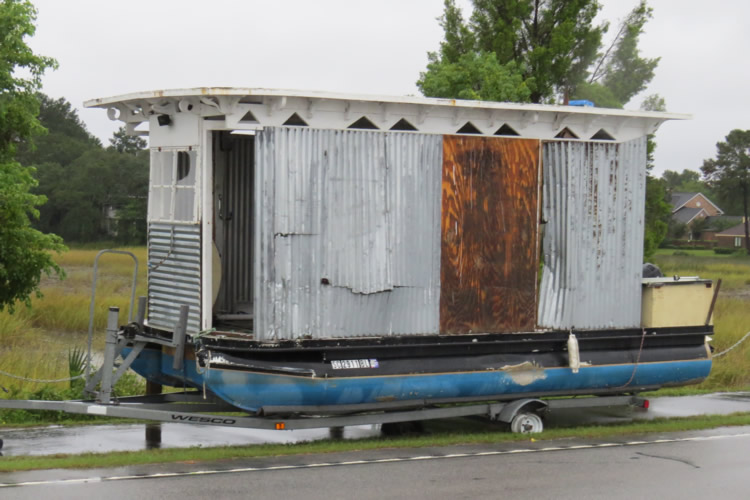 Contributing editor Michael Kaynard, who helped judge the contest and couldn’t win a prize, said he called this photo “Jethro’s Ark.” The pontoon boat apparently has been broken down along Sam Rittenberg Blvd. for the last few days.
Contributing editor Michael Kaynard, who helped judge the contest and couldn’t win a prize, said he called this photo “Jethro’s Ark.” The pontoon boat apparently has been broken down along Sam Rittenberg Blvd. for the last few days.
 Luke Daniels of Charleston said this heron was fishing on flooded Barre Street on Saturday.
Luke Daniels of Charleston said this heron was fishing on flooded Barre Street on Saturday.
 This was the scene Saturday morning on U.S. Highway 17 in West Ashley — the southbound lane was covered in spots by water. Photo by Andy Brack
This was the scene Saturday morning on U.S. Highway 17 in West Ashley — the southbound lane was covered in spots by water. Photo by Andy Brack
News outlets are offering a lot of photo compilations that show the impact of the storm across the state. Here are a couple of links you may want to check out:
- Video of Columbia flooding by Corey Hutchins.
- Photo gallery from The Post and Courier
- If you have suggestions for other photo galleries, please send links to editor@charlestoncurrents.com.
In renaming courthouse, Hollings still teaching us
By Andy Brack, editor and publisher
OCT. 5, 2015 | At age 93, Fritz Hollings is still teaching us.
![]() On Friday as a weekend deluge of rain started, dignitaries from all over gathered at St. Michael’s Church at the Four Corners of Law to rename the federal courthouse annex across the street that was named in 1988 for Hollings.
On Friday as a weekend deluge of rain started, dignitaries from all over gathered at St. Michael’s Church at the Four Corners of Law to rename the federal courthouse annex across the street that was named in 1988 for Hollings.
The senator, who got money put in the federal budget to construct the judicial center, never really wanted it named for him. U.S. Sen. Strom Thurmond, who had all sorts of things named for him by that time, apparently thought Hollings needed something named for him too.
Hollings, whose intelligence and personality sometimes can suck the oxygen right out of a room, apparently was surprised as anyone when the ceremony came 27 years ago. Almost immediately and for years later in private conversations, he would say he was honored but suggested the building really should be named for the late federal Judge J. Waties Waring.
Back in the middle of the last century, Waring, a lawyer’s lawyer from Charleston, incurred the wrath of the white establishment by listening to and ruling on civil rights cases by applying the rule of law, not the customs of segregation. He ruled blacks should be able to vote in the all-white Democratic primary. And in 1951, he wrote that segregated schools were unconstitutional. Three years later when the unanimous landmark Brown v. Board of Education decision was announced, it was crystal clear that Waring’s dissent was the foundation of the case that changed America.
For standing up for what was right, Waring and his wife were ostracized. Bricks broke windows at their Meeting Street home. A cross was burned. Federal authorities protected them. Soon after the publication of the dissent, Waring retired. He moved to New York City, never to return alive to his hometown of Charleston.
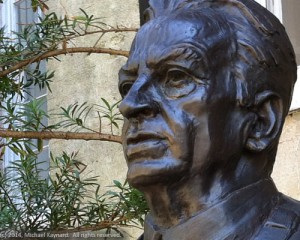
From a statue of Waring in the garden of the now-named J. Waties Waring Judicial Center; 2014 photo.
Hollings, as a young lawyer after World War II, appeared in court before Waring. He remembers how the judge helped young lawyers. He remembers Waring’s insights on how America is a government of laws, not a government of men. In 1962 after four years of what Mayor Joe Riley called “the most robust period of governmental leadership in South Carolina history,” Hollings spread Waring’s message about the rule of law in a speech that led to the peaceful integration of Clemson University.
So it’s not surprising that Hollings has long felt a little funny about a courthouse bearing his name when Waring made history next door. It’s an itch he needed to scratch, but not an itch that those in power really wanted to scratch for him. U.S. Sen. Lindsey Graham and U.S. Rep. Jim Clyburn, who eventually pushed through bills to rename the annex for Waring, admitted Friday that they were uncomfortable with changing the name because they didn’t want to dishonor Hollings.
But Hollings persisted. He knew it was the right thing to do. Now, many say it is an act of humility. They laud him for following his conscience in doing the right thing to honor Waring. They praise him for shining the light on Waring, forgotten for decades by South Carolinians.
Clyburn noted during the Friday ceremony that Hollings is the first person to ever ask for his name to be taken off a federal building and for it to be renamed for someone else. And then he added, “Fritz, you have shown us so many ways how to be a real person, and this has to be right at the top.”
This is the essence of what is really going with the renaming. By asking for Waring to be honored, Hollings is really trying to guide a South Carolina split by factional politics toward focusing on doing what is right for everybody who lives here.
He’s also showing the real meaning of selfless public service. After a life of creating opportunities for people — whether the millions who got better jobs because of skills learned at technical colleges or millions of children who got better early feeding because of federal nutritional programs started by Hollings or through the pragmatic use of power to get the government to behave — Hollings knows he doesn’t need a building named for him to validate a life spent helping people. He knows he doesn’t need to get credit for doing what should have been done in 1988.
But I think he also knows it’s important today for South Carolina to remember and be proud of the real courage displayed by Waties Waring and the dozens of black families of Clarendon County in the late 1940s who risked everything to fight for the freedom and equality guaranteed in the Constitution.
By asking for the annex to be renamed, Hollings is really reminding us what true public service is. By example, he’s again showing us what real leadership looks like.
For that, we should be grateful. And now in a state sorely lacking the leaders to make tough decisions, we, more than ever, need to listen, learn and emulate his example.
Andy Brack is editor and publisher of Charleston Currents and Statehouse Report. You can reach him at: editor@charlestoncurrents.com
IN THE SPOTLIGHTLaFond Law Group, P.A.
 The public spiritedness of our underwriters allows us to bring Charleston Currents to you at no cost. Today our spotlight is on LaFond Law Group, P.A. Attorneys Catherine E. LaFond and Ashley Andrews and their competent team offer compassion and broad experience in helping clients with real estate closings, estate planning, and securing veterans’ benefits and other long-term care benefits.
The public spiritedness of our underwriters allows us to bring Charleston Currents to you at no cost. Today our spotlight is on LaFond Law Group, P.A. Attorneys Catherine E. LaFond and Ashley Andrews and their competent team offer compassion and broad experience in helping clients with real estate closings, estate planning, and securing veterans’ benefits and other long-term care benefits.
Located at 544 Savannah Highway near Folly Road, LaFond Law Group, P.A., is convenient for appointments with helpful staff members who can help you and your family craft wills and trusts, weave comfortably through the maze of estate and elder law planning options, and close real estate loans for refinancing or purchases. To learn more, contact the team at 843.762.3554.
- Visit online at LaFondLaw.com.
- To meet all of our underwriters, click here.
Rice
By Kendra Hamilton, republished with permission
![]() You speak of the rivers of your homeplace far to the north,
You speak of the rivers of your homeplace far to the north,
How you’d leave the city in summer for the long trek
to Minnesota, then gather at the creekside in boats,
singing, to beat the grasses till they yielded their sweet black grains.
Here, beside the Edisto, rice is a bitter memory:
a darkend barn, a bright brass anklet, a chain,
a people once wild hearing the songs of a people
once free, sick for the rivers of home.
“Brass ankle” — I thought it simply meant “bright skin.”
But in this ornery riverbank town it’s a deadly insult,
you say, from days of white heat, green rivers, long past.
I’m boiling the water for a pot of rice, sifting white
translucent grains in water, an act so familiar now made strange
by the spell of your voice, the warble of your courting flute.
Charleston native and poet Kendra Hamilton, is assistant professor of English at Presbyterian College where she also is director of the Southern Studies Program. This poem is from her 2006 work, The Goddess of Gumbo. In August, we published an essay by Hamilton, “Blacks not only victims of racial discrimination.”
GOOD NEWSCharleston caregiver honored with big award
When Charleston resident Demonica Frazier reported to work September 28 at the Ashley Park retirement community in West Ashley, she got a big surprise. She was awarded BrightStar Care’s Caregiver of the Year for the care she provides to 90-year-old couple, Barb and Joe Miller.

Frazier, third from left, is flanked by clients Barb Miller and Joe Miller. Daughter Deborah Miller is at the far left. Photo provided.
Each year, thousands of families around the country have the opportunity to nominate their caregiver for the Caregiver of the Year award by providing a heartfelt testimonial about the outstanding and devoted services delivered to their loved one. According to a press release, Deborah Miller, wrote “Demonica always has a smile on her face when greeting clients and has a playful spirit, all while being mature beyond her years. She has lifted the spirits of my parents many days during some very challenging times and I rest easier each night knowing that she is there.”
Working with the nominating family, Demonica’s employer, franchisee BrightStar Care of Charleston, arranged for a surprise “reveal event” at Ashley Park, complete with a trophy, sash, cake and a heartwarming speech from colleagues and family members. Nationally, BrightStar care offers home care and medical staffing at more than 250 locations in 36 states.
Also in good news:
Bar-B-Qued Bluegrass Series. Home Team BBQ’s West Ashley location, 1205 Ashley River Road, will host this fall bluegrass series with three free concerts that will start at 9 p.m. On tap Oct. 13 is a bluegrass quartet from Johnson City, Tenn., the Honey Chasers. Also ahead: Clyde’s on Fire from Asheville, N.C., on Oct. 20; and Charleston’s Bluestone Ramblers on Oct. 27. More.
 Buses now have WiFi. Free WiFi Internet service now is offered on CARTA’s main line and Express buses, according to an Oct. 1 announcement. Express Routes 1 through 4 will have unlimited WiFi, while up to 12 users can connect through hotspots on local routes (also known as MiFi).
Buses now have WiFi. Free WiFi Internet service now is offered on CARTA’s main line and Express buses, according to an Oct. 1 announcement. Express Routes 1 through 4 will have unlimited WiFi, while up to 12 users can connect through hotspots on local routes (also known as MiFi).
The service, announced as a partnership with Verizon Wireless, gives bus riders an technological advantage over those driving their own vehicles, said Charleston City Council member Mike Seekings, CARTA’s chair. “It’s a first for our system. It’s a first for our region. And we envision this service as being the sort of tool that will delight our current customers and also get people on the bus for the first time. That change, in turn, decreases traffic and reduces wear on infrastructure, which benefits everyone.”
FEEDBACKWalletHub says study isn’t flawed
To the editor:
![]() Thanks for citing WalletHub today [Brack: State’s tax structure needs work, not praise]. I just want to clarify one of your points:
Thanks for citing WalletHub today [Brack: State’s tax structure needs work, not praise]. I just want to clarify one of your points:
“Simply put, the flawed WalletHub study doesn’t rely on basic economic tax fairness principles like equity (ability of people to pay), adequacy (whether the system raises enough money for people’s needs), neutrality, transparency and simplicity.”
I want to make sure you don’t think we merely took a survey of taxpayers’ opinions and left it at that. We actually contrasted it with the ITEP’s 2015 Report and its measurement of South Carolina’s tax regressiveness. This nationally renowned report also fails to address your points, but that does not mean it’s “flawed.”
I know today’s article offers your commentary, but I hope you understand our methodology enough now to consider retracting that word — “flawed” — from your post. Of course, let me know if I can provide you with anything else from our research team.
– Diana Popa, communications manager, WalletHub.com
EDITOR’S NOTE: Thanks, but we stick by our assessment. The study is flawed because it starts with subjective opinions. It doesn’t start with applying empirical, generally-accepted economic principles to make the rankings. Using opinions as a starting point is dumb because nobody thinks taxes are fair.
Rant. Rave. Tell us what you really think. If you have an opinion on something we’ve offered or on a subject related to the Lowcountry, please send your letters of 150 words or less to: editor@charlestoncurrents.com. Our feedback policy.
CALENDARBig Book Sale, Star Wars fun, more
 Middle East talk: 6 p.m., Oct. 7, Citadel Alumni Center, 69 Hagood Ave., Charleston. The World Affairs Council of Charleston will host a talk by Paul Hughes, senior advisor for international security and peacebuilding at the U.S. Institute of Peace. Learn more.
Middle East talk: 6 p.m., Oct. 7, Citadel Alumni Center, 69 Hagood Ave., Charleston. The World Affairs Council of Charleston will host a talk by Paul Hughes, senior advisor for international security and peacebuilding at the U.S. Institute of Peace. Learn more.
That BIG Book Sale: Oct. 9-11, Omar Shrine Auditorium, 176 Patriots Point Road, Mount Pleasant. The Charleston Friends of the Library will host the 34th annual sale with more than 60,000 books, DVDs, CDs, music and maps for prices that start at 50 cents. Great bargains are to be had. Admission is free. Hours are more are here: www.charlestonlibraryfriends.org
Star War Reads Day: 11 a.m. to 2 p.m., Oct. 10, Main Library, Calhoun Street, Charleston. The Charleston County Public Library will host an afternoon of Star Wars-related fun for the family. Photos with popular characters, costume contest, music and more. More.
Autumn on the Ashley: 9 a.m. to 5 p.m., Oct. 10-11, Magnolia Plantation and Gardens, S.C. Highway 61, Charleston. The popular attraction will have more than 50 vendors exhibiting wood carvings, paintings, textiles, pottery, jewelry and more at the 8th annual event. More.
Polo: 11:45 a.m. to 6 p.m., Oct. 11, Sandcastle Community Center, 1 Shipwatch Road, Kiawah Island, S.C. The Kiawah Cares Foundation will host the inaugural Kiawah Cup Beach Polo invitational on the beach as a new fundraiser. To learn more about tickets, which now are on sale, go to: KiawahCup.org
(RESCHEDULED) Charleston Greek Fall Festival: Oct. 16-18, Greek Orthodox Church of the Holy Trinity, 30 Race St., Charleston. Join a celebration of Greek faith, culture, food, wine and music at this annual tradition. Free for active-duty military and kids under 13. Just $3 for seniors and students; $5 for adults. More.
North Charleston Block Party: 4 p.m. to 8 p.m., Oct. 17, Olde Village, East Montague Street near Park Circle. This third annual event will feature live music, arts and craft booths, costume contest and more. There will be trick-or-treating for kids 12 and under. Email for more information.
(NEW) “Hand in Hand” Jazz Jam: 5 p.m. to 9 p.m., Oct. 18, Dock House, Bowen’s Island. The 6th annual Charleston Jazz Jam will be a tribute to Emanuel AME Church and will feature more than 50 jazz musicians. No admission fee, but donations will be accepted. More.
(RESCHEDULED) Thanks Joe! 3 p.m. to 7 p.m., Oct. 25, at Brittlebank Park, followed by 7 p.m. to 9 p.m. at nearby Joe Riley Stadium, Charleston. This is a privately-funded, family event to allow people to give their appreciation for Mayor Joe Riley’s 40 years of public service. The first half of the event will feature games and food, while the last two hours will include a Blue Dogs all-star tribute, rocker Edwin McCain, the Emanuel AME Choir and more. More details to come.
History of Charleston’s mayor: 6 p.m., Oct. 28, Main Library, Calhoun Street, Charleston. Just in time for the 2015 election, the library will host a talk that delves into the evolution of Charleston’s executive office, from “intendant” to mayor. More.
Bird walks: 8:30 a.m. to noon, every Wednesday and Saturday. This is the time of year that a great variety of migrating birds fly through the Lowcountry so what better time to take part in one of the regular early morning bird walks at Caw Caw Interpretive Center in Ravenel. Pre-registration is suggested. Cost is $5. Walks also are conducted on James Island and Folly Beach. Learn more online.
If you have an event to list on our calendar, please send it to editor@charlestoncurrents.com for consideration. The calendar is updated weekly on Mondays.
REVIEWBlackout: Remembering the Things I Drank to Forget
A memoir by Sarah Hepola
![]() This new memoir is an author’s dark yet comical passage in piecing together the nights she loses to alcohol induced blackouts, her decision to get sober, and her journey in sobriety. Hepola gives a revealing and moving look into the alcoholic mind. She details its influence in the growth and destruction of friendships and its haphazard navigation through establishing her writing career. A number of reviews have touted this book as hilarious, but honestly, it’s sad. Hepola has to use humor to cut the seriousness of her subject matter. Her road to recovery is a rough one, but triumphant and worth getting into. This is a timely read considering the The Post and Courier recently published an article showing that Charleston’s intake of alcohol is far greater than the national average . It doesn’t hurt to mention that Alcoholics Anonymous has 26 groups in the area which meet weekly and even daily.
This new memoir is an author’s dark yet comical passage in piecing together the nights she loses to alcohol induced blackouts, her decision to get sober, and her journey in sobriety. Hepola gives a revealing and moving look into the alcoholic mind. She details its influence in the growth and destruction of friendships and its haphazard navigation through establishing her writing career. A number of reviews have touted this book as hilarious, but honestly, it’s sad. Hepola has to use humor to cut the seriousness of her subject matter. Her road to recovery is a rough one, but triumphant and worth getting into. This is a timely read considering the The Post and Courier recently published an article showing that Charleston’s intake of alcohol is far greater than the national average . It doesn’t hurt to mention that Alcoholics Anonymous has 26 groups in the area which meet weekly and even daily.
— Codie Smith, John’s Island Regional Library, John’s Island, S.C.
Find this and similar titles from Charleston County Public Library. This item available as a book. To learn more or place a hold, visit www.ccpl.org or call 843-805-6930.
MYSTERY PHOTOWhere’s this building?
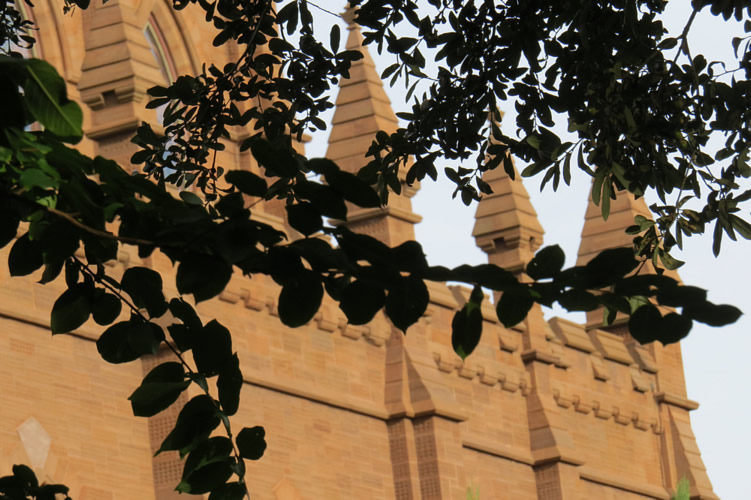 This mystery photo should be pretty easy to folks in Charleston, but who knows — it might be a stumper. Send your guess to editor@charlestoncurrents.com — and make sure to include the town in which you live. If you’ve got a story about the building, send that along too.
This mystery photo should be pretty easy to folks in Charleston, but who knows — it might be a stumper. Send your guess to editor@charlestoncurrents.com — and make sure to include the town in which you live. If you’ve got a story about the building, send that along too.
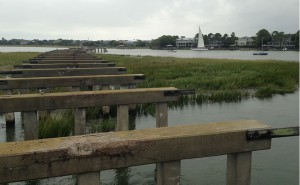 Several people correctly identified the photo from reader Deborah Getter in our most recent issue as the remnants of a bridge to Sullivan’s Island from Mount Pleasant. According to a historical sign at the location, Cove Inlet, “Before the Revolutionary War, a plank bridge built on barrels was constructed across the inlet separating Mount Pleasant from Sullivan’s Island. In 1864, the H.L. Hunley crew crossed the footbridge on the way to Breach Inlet to test dive the submarine. A trolley bridge spanned the cove in 1898 and was replaced by a vehicle bridge in 1927 known as Pitt Street Bridge.”
Several people correctly identified the photo from reader Deborah Getter in our most recent issue as the remnants of a bridge to Sullivan’s Island from Mount Pleasant. According to a historical sign at the location, Cove Inlet, “Before the Revolutionary War, a plank bridge built on barrels was constructed across the inlet separating Mount Pleasant from Sullivan’s Island. In 1864, the H.L. Hunley crew crossed the footbridge on the way to Breach Inlet to test dive the submarine. A trolley bridge spanned the cove in 1898 and was replaced by a vehicle bridge in 1927 known as Pitt Street Bridge.”
Veteran Mystery Photo sleuth Chris Brooks of Mount Pleasant, who admits he was completely stumped by the previous issue’s mystery of the gate at Bethel United Methodist Church in Charleston, was first to identify the bridge photo and its significance. Others who got it right were Jane Riley, John Bleecker, Joe Mendelsohn and Bruce Jayne, both of Charleston; Artist Karen Burnett Garner of Dacula, Ga., writes that the bridge is a great place to watch the sunset. Sullivan’s Island resident Carlos Herbas added, “You can barely see Stella Maris, a Catholic church, steeple on the right of the picture. The picture was taken right at the inlet. The rest of the bridge is a park called Picket Park, after former Sullivan’s Island resident Dr. Otis Picket.
- If you have a picture with which you’d like to stump our readers, send it along to editor@charlestoncurrents.com.
Highway 301
S.C. Encyclopedia | Construction of this major U.S. highway in South Carolina began in 1932 during the Great Depression, when the federal government began taking over the maintenance and construction of many state roads. The route began at Baltimore, Maryland, and ended at Sarasota, Florida, crossing through many towns in eastern South Carolina, including Dillon, Latta, Florence, Manning, Olanta, Summerton, Bamberg, and Allendale. From the North Carolina border to the Savannah River, Highway 301 covers a distance of approximately 180 miles.

An abandoned truck stop near Ulmer, S.C. Photo is courtesy of the Center for a Better South.
The highway’s many nicknames are an indication that it was popular among tourists throughout the second quarter of the twentieth century. These names included: “Tobacco Trail,” “Highway of Southern Hospitality,” “Tourist Highway,” “Shortest Route from Maine to Florida,” and “The Washington-Florida Short Route.” This road was popular among tourists because it avoided some of the larger cities, had no toll bridges or ferries, and was paved its entire length.
During the 1950s this highway was a major U.S. north-south route, well known to travelers in the eastern United States. Even the popular television show I Love Lucy, featured an episode where Lucille Ball traveled in an automobile with a woman who always traveled Highway 301 to Florida. This highway created a demand for restaurants and motels in South Carolina. Some popular motels included the Lewis Motel in Olanta, the Santee Motor Company in Manning, the Holiday in Florence, and the Cotton Patch Motel in Bamberg.
The building of Interstate 95 in the late 1950s and 1960s, which ran almost parallel to U.S. 301, caused the tourist traffic to decline on the older highway. Businesses on U.S. 301, particularly the motel operators, had difficulty in maintaining their customer base. Several rebuilt near the interstate, while others operated at a much slower pace.
– Excerpted from the entry by Lloyd Johnson. To read more about this or 2,000 other entries about South Carolina, check out The South Carolina Encyclopedia by USC Press. (Information used by permission.)
About Charleston CurrentsOUR UNDERWRITERS
Charleston Currents is an underwriter-supported weekly online journal of good news about the Charleston area and Lowcountry of South Carolina.
- Meet our underwriters
- To learn more about how your organization or business can benefit, click here to contact us. Or give us a holler on the phone at: 843.670.3996.
OUR TEAM
Charleston Currents offers insightful community comment and good news on events each week. It cuts through the information clutter to offer the best of what’s happening locally.
- Mailing address: O. Box. 22261 | Charleston, SC 29413
- Phone: 843.670.3996
Charleston Currents is provided to you twice a week by:
- Editor and publisher: Andy Brack, 843.670.3996
- Contributing photographer: Michael Kaynard
- Contributing editor, real estate: Doug Holmes
- Contributing editors, seniors: Catherine LaFond, Mary Ross McQuage
- Contributing editor, money: Kyra Morris
- Contributing editor, Palmetto Poem: Marjory Wentworth



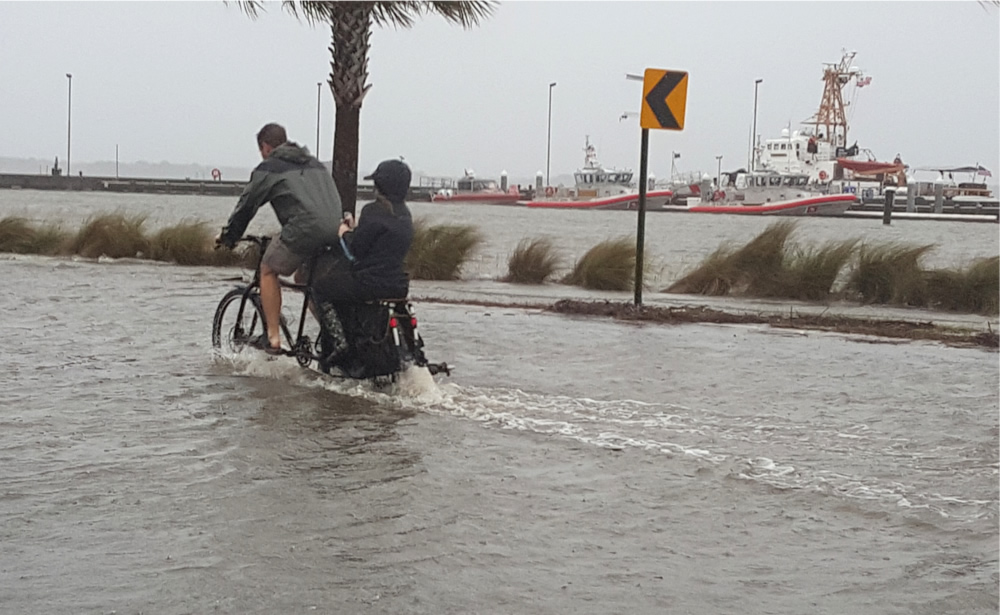
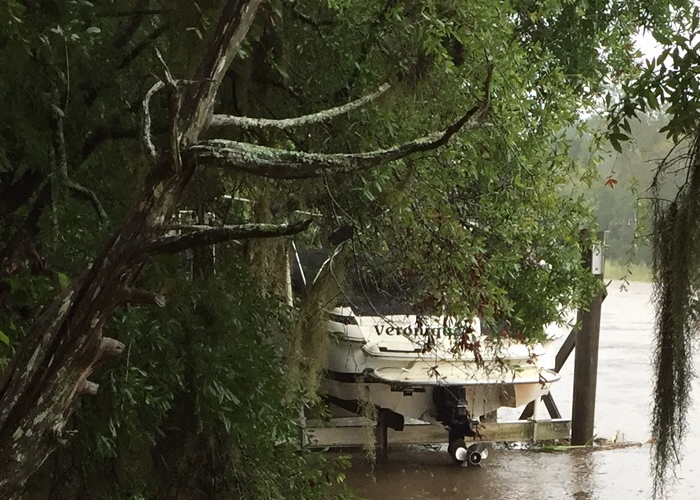


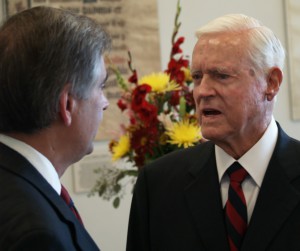


 We Can Do Better, South Carolina!
We Can Do Better, South Carolina!
























